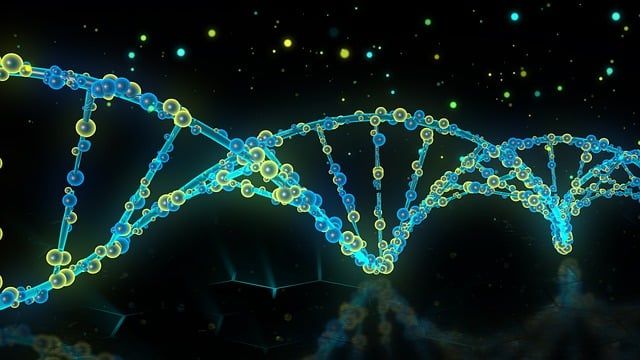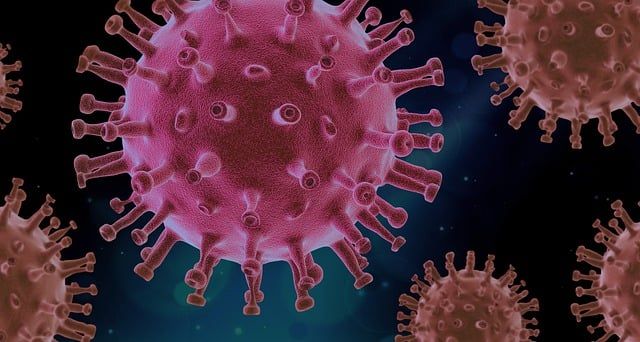Everyone wants good health, but what does it mean? This article will explore the concept of good health and uncover the three essential keys to achieving it. Understanding and implementing these keys into your life can unlock the mystery and help you enjoy a fulfilling and vibrant existence.
“To ensure good health: eat lightly, breathe deeply, live moderately, cultivate cheerfulness, and maintain an interest in life.” -William Londen
Understanding the Concept of Good Health
Good health is a multifaceted concept that goes beyond the mere absence of disease. It encompasses physical, mental, and social well-being, creating a harmonious life balance. Talking about good health refers to a strong immune system and a sense of vitality, emotional stability, and harmonious relationships with others.
Defining Good Health
Physical well-being is an integral part of good health. It involves taking care of your body through regular exercise, proper nutrition, and adequate rest. When you prioritize your physical health, you enhance your body’s ability to function optimally, reducing the risk of chronic diseases and promoting longevity.
Mental well-being is equally important in achieving good health. It encompasses your emotional and psychological state, influencing how you perceive and cope with the challenges of life. When you are mentally healthy, you experience a sense of inner peace, resilience, and the ability to manage stress effectively.
Social well-being is another crucial aspect of good health. It refers to your ability to form and maintain meaningful relationships with others. You experience a sense of belonging, support, and fulfillment when you have strong social connections. These relationships provide you with emotional nourishment and contribute to your overall well-being.
The Role of Good Health in Life
Good health serves as the foundation upon which life is built. It empowers you to pursue your passions, engage in meaningful activities, and nurture relationships. When in good health, you have the energy and vitality to make the most of every moment and overcome life’s challenges.
With good physical health, you can engage in various physical activities that bring you joy and fulfillment. Whether it’s playing sports, hiking in nature, or simply taking a leisurely walk, your physical well-being allows you to experience the world vibrantly and actively.
Mental health plays a crucial role in your ability to navigate life’s ups and downs. When you are mentally healthy, you have the clarity to set goals, make sound decisions, and pursue personal growth. It enables you to cultivate a positive mindset, develop resilience, and find meaning and purpose.
Furthermore, good social health enhances your overall well-being. Meaningful connections with family, friends, and community members provide emotional support, a sense of belonging, and a network of people who share your values and interests. These relationships contribute to your happiness and help you navigate the complexities of life with greater ease.
In conclusion, good health is not just the absence of disease but a holistic state of well-being. It encompasses physical, mental, and social aspects, allowing you to live your life to the fullest. You can lead a fulfilling and meaningful life by prioritizing your health and caring for yourself in all these dimensions.
The First Key: Balanced Nutrition
Nutrition involves eating as many real, minimally processed foods as possible for good health.
The Importance of Balanced Nutrition
Achieving good health starts with nourishing the body with the right nutrients. Balanced nutrition1 provides the fuel and building blocks the body needs to function optimally. It supports growth and repair, boosts the immune system, and improves overall well-being.
When it comes to balanced nutrition, it’s not just about eating a variety of foods, but also about consuming them in the right proportions. Each nutrient plays a specific role in the body, and getting the right balance ensures you meet your nutritional needs.
For example, carbohydrates are the body’s main source of energy, so it’s important to include them in your diet. However, consuming too many carbohydrates can lead to weight gain and other health issues. On the other hand, not consuming enough carbohydrates can leave you feeling tired and sluggish.
Proteins are essential for building and repairing tissues, as well as for the production of enzymes and hormones. Including lean proteins, such as chicken, fish, tofu, and legumes, in your diet helps ensure you get the amino acids your body needs.
Fruits and vegetables are rich in vitamins, minerals, and antioxidants. These nutrients are important for maintaining a strong immune system, protecting against diseases, and promoting overall health. It’s recommended to include a variety of colorful fruits and vegetables in your daily meals to reap the benefits of their diverse nutrient profiles.
Essential Nutrients for Optimal Health
A balanced diet should include a variety of fruits, vegetables, whole grains, lean proteins, and healthy fats. These foods provide essential nutrients such as vitamins, minerals, antioxidants, and fiber. It is important to prioritize nutrient-dense foods and limit the consumption of processed and sugary foods.
Whole grains, such as brown rice, quinoa, and whole wheat bread, are rich in fiber, which aids in digestion and helps to keep you feeling full for longer. Fiber also plays a role in maintaining healthy cholesterol levels and preventing constipation.
Healthy fats, such as those found in avocados, nuts, and olive oil, are important for brain health, hormone production, and the absorption of fat-soluble vitamins. Including these fats in your diet can help to reduce the risk of heart disease and support overall cognitive function.
Vitamins and minerals are essential for various bodily functions. For example, vitamin C is important for collagen production and immune function, while calcium is crucial for bone health. Including various foods in your diet ensures you get a wide range of vitamins and minerals.
Antioxidants, found in abundance in fruits and vegetables, help to protect our cells from damage caused by free radicals. They have been linked to a reduced risk of chronic diseases, such as heart disease and certain types of cancer.
In conclusion, balanced nutrition is key to achieving and maintaining optimal health. By consuming various nutrient-dense foods in the right proportions, you can provide your body with the necessary fuel and building blocks for overall well-being. Remember to prioritize fruits, vegetables, whole grains, lean proteins, and healthy fats in your diet while limiting processed and sugary foods.
The Second Key: Regular Exercise
When you are in good health, it’s easier to exercise.
The Benefits of Regular Exercise
Incorporating regular exercise into your daily routine is crucial for good health. Physical activity not only helps you maintain a healthy weight but also strengthens your muscles and bones, improves cardiovascular health, and enhances mental well-being. Exercise is also a natural mood booster2, reducing stress and anxiety.
When you exercise regularly, your body releases endorphins, known as the “feel-good” hormones. These endorphins interact with receptors in your brain, reducing your perception of pain and triggering positive feelings in the body. This is why, after a good workout, you often feel a sense of euphoria and increased energy.
Regular exercise also plays a vital role in maintaining a healthy weight. When you engage in physical activity, your body burns calories, which helps you shed excess pounds. Additionally, exercise boosts your metabolism, making it easier to maintain a healthy weight in the long run.
Different Types of Exercise for Overall Health
Variety is the key to reaping the full benefits of exercise. Engaging in a combination of aerobic activities, such as walking or swimming, strength training exercises, and flexibility exercises like yoga or stretching is recommended. Find activities you enjoy to make exercise a sustainable and enjoyable part of your lifestyle.
Aerobic exercises like brisk walking, running, or cycling increase your heart rate and improve cardiovascular health. These activities strengthen your heart and lungs, improving their efficiency and reducing the risk of heart disease and other cardiovascular conditions.
Strength training exercises, on the other hand, focus on building and toning your muscles. By lifting weights or using resistance bands, you can increase your muscle mass, improve your physical appearance, and boost your metabolism. Strength training also helps prevent age-related muscle loss, keeping you strong and functional as you age.
Flexibility exercises, such as yoga or stretching, help improve your range of motion and prevent injuries. These exercises increase your flexibility and joint mobility, allowing you to move more freely and easily perform daily activities. Flexibility exercises also promote relaxation and reduce muscle tension, making them an excellent choice for stress relief.
When it comes to exercise, it’s important to find activities that you enjoy. Whether it’s dancing, hiking, playing a sport, or practicing martial arts, incorporating activities that bring you joy will make exercise a sustainable and enjoyable part of your lifestyle. Remember, the key is to move your body regularly and find activities that make you physically and mentally good.
The Third Key: Adequate Rest
The Science Behind Adequate Rest
Rest is often overlooked but is essential for good health. During sleep, the body repairs and regenerates cells consolidates memories, and regulates hormones. Sufficient rest improves cognitive function, enhances mood, and strengthens the immune system.
When you sleep, your brain goes through different stages, including non-rapid eye movement (NREM) and rapid eye movement (REM) sleep. During NREM sleep, your body repairs and regenerates cells, allowing for tissue growth and repair. This is why getting enough rest is crucial for athletes and individuals recovering from injuries.
In addition to physical restoration, sleep also plays a vital role in memory consolidation. During REM sleep, your brain processes and consolidates information, helping you retain and recall memories. This is why a good night’s sleep is often recommended before an important exam or presentation.
Furthermore, adequate rest is essential for hormonal regulation. Sleep deprivation can disrupt the balance of hormones in your body, leading to increased levels of stress hormones like cortisol. This can negatively impact your mood, cognitive function, and overall well-being.
Strategies for Ensuring Quality Rest
Establishing a consistent sleep routine, creating a sleep-friendly environment, and practicing relaxation techniques before bed can promote restful sleep. It is important to prioritize sleep and make it a non-negotiable part of your daily schedule. Quality rest is just as important as nutrition and exercise in nurturing good health.
Creating a sleep routine involves going to bed and waking up at the same time every day, even on weekends. This helps regulate your body’s internal clock, making it easier to fall asleep and wake up naturally. Additionally, avoiding stimulating activities, such as using electronic devices or engaging in intense exercise close to bedtime, can help prepare your body for sleep.
Having a sleep-friendly environment is also crucial for quality rest. This includes keeping the bedroom cool, dark, and quiet. Investing in a comfortable mattress and pillow can also make a significant difference in the quality of your sleep. Additionally, incorporating relaxation techniques such as deep breathing, meditation, or gentle stretching before bed can help calm the mind and prepare the body for a restful night’s sleep.
Lastly, it is important to recognize the importance of prioritizing sleep. Sleep is often sacrificed for work, socializing, or other activities in this fast-paced society. However, neglecting sleep can have serious consequences on your health and well-being. By making sleep a non-negotiable part of your daily schedule, you can give your body the rest it needs to function optimally.
Integrating the Three Keys into Your Lifestyle
Practical Tips for Balanced Nutrition, Exercise, and Rest
Implementing these three keys into your life may seem daunting, but it is entirely achievable with a few simple strategies. Plan and prepare your meals in advance, aiming for a variety of nutrient-dense foods. Schedule regular exercise sessions, making it a priority instead of an afterthought. Create a relaxing bedtime routine and make sleep a priority by setting aside enough time for rest.
Overcoming Challenges in Maintaining Good Health
While the path to good health may have its obstacles, it is important to persevere. Surround yourself with a supportive community, seek professional guidance if necessary, and celebrate every small step towards better health. Remember that good health is a lifelong journey, and each day presents an opportunity to make choices that will unlock the mystery and bring you closer to vitality and well-being.
Conclusion
In conclusion, good health is multi-faceted, encompassing physical, mental, and social well-being. Balanced nutrition, regular exercise, and adequate rest are the three essential keys to unlocking the mystery and enjoying a fulfilling life. By embracing these keys and integrating them into your lifestyle with practical strategies, you empower yourself to live your life to the fullest. Embrace the journey towards good health – the rewards are immeasurable. Boost your energy and improve performance with Accuri®Vitality ↑® NAD+ Booster, an optimized NAD supplement.
Lastly, if you’re interested in going deeper on health-related content, here are a few of our recent posts that you may want to read:
- Why Optimized, Precision Medicine is the Future
- What Does Peak Performance Look Like?
- Andrew Huberman is Wrong About NAD, NAD+ precursor & Longevity
- 9 Powerful Benefits of Optimizing Your NAD
Referenced Sources:












